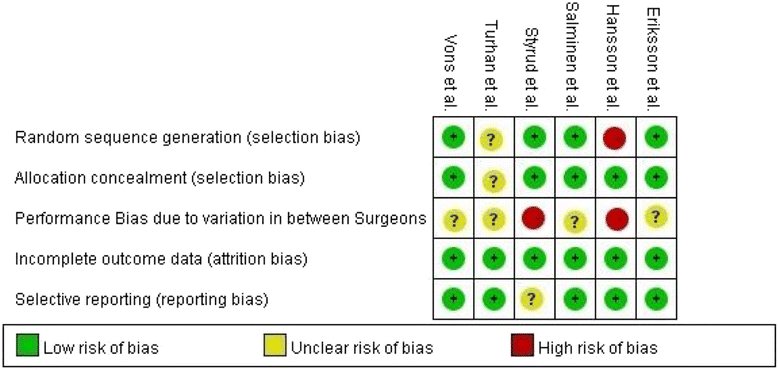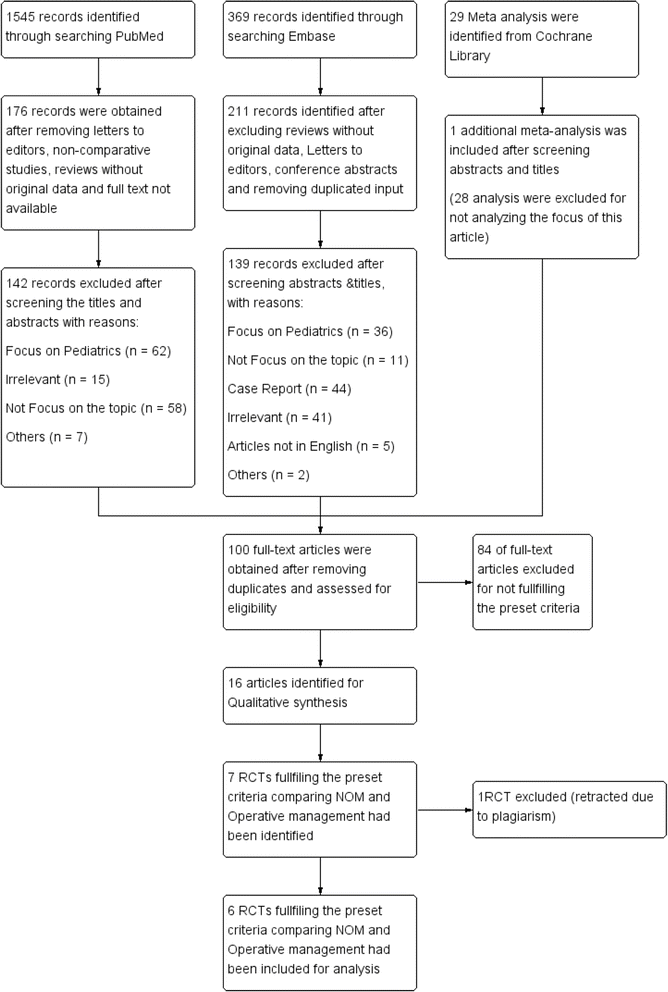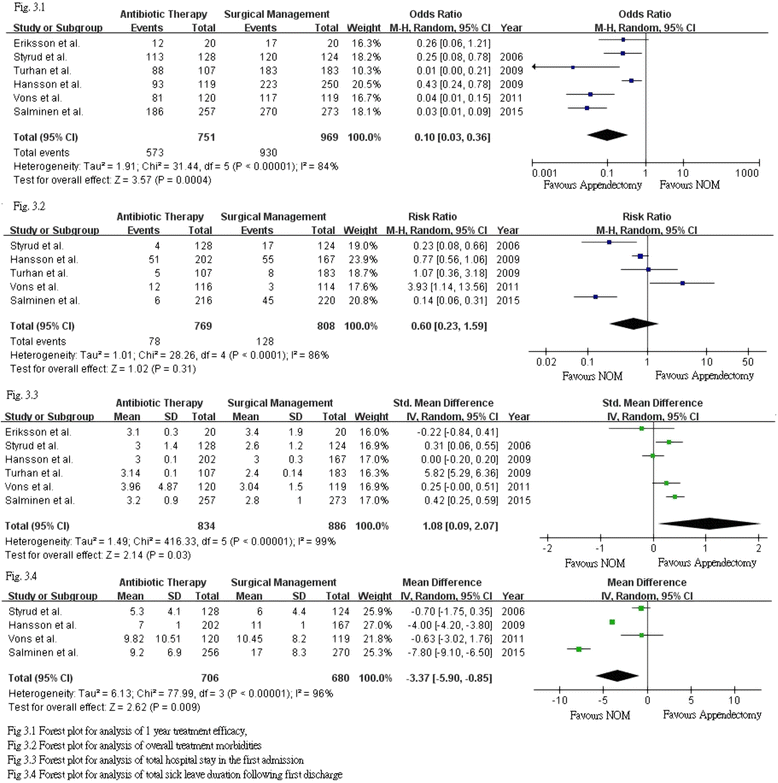The current management of acute uncomplicated appendicitis: should there be a change in paradigm? A systematic review of the literatures and analysis of treatment performance
- PMID: 29075315
- PMCID: PMC5644137
- DOI: 10.1186/s13017-017-0157-y
The current management of acute uncomplicated appendicitis: should there be a change in paradigm? A systematic review of the literatures and analysis of treatment performance
Abstract
Introduction: Appendectomy has long been the mainstay of intervention for acute appendicitis, aiming at preventing perforation, peritonitis, abscess formation and recurrence. With better understanding of the disease process, non-operative management (NOM) with antibiotics alone has been proved a feasible treatment for uncomplicated appendicitis. This article aimed at systematically reviewing the available literatures and discussing the question whether NOM should replace appendectomy as the standard first-line treatment for uncomplicated appendicitis.
Method: A search of the Embase, Pubmed and Cochrane Library was performed using the keywords 'acute appendicitis' and 'antibiotic therapy'. Meta-analysis with inverse variance model for continuous variable and Mantel Haenzel Model for dichotomous variable was performed to evaluate the one year treatment efficacy, morbidities rate, sick leave duration and length of hospital stay associated with emergency appendectomy and NOM.
Results: Six randomized control trials were identified out of 1943 publications. NOM had a significant lower treatment efficacy rate at one year, 0.10 (95% CI 0.03-0.36, p < 0.01), when compared to appendectomy. The morbidities rate was comparable between the two interventions. The length of hospital stay was longer, with a mean difference of 1.08 days (95% CI 0.09-2.07, p = 0.03), and the sick leave duration was shorter, a mean difference of 3.37 days (95% CI -5.90 to -0.85 days, p < 0.01) for NOM.
Conclusion: The paradigm remains unchanged, that appendectomy is the gold standard of treatment for uncomplicated appendicitis, given its higher efficacy rate when compared to NOM.
Keywords: Antibiotic therapy; Appendectomy; Appendicitis; Non operative management.
Conflict of interest statement
Ethics approval and consent to participate
Not applicable.
Consent for publication
Not applicable.
Competing interests
The authors declare that they have no competing interests.
Publisher’s Note
Springer Nature remains neutral with regard to jurisdictional claims in published maps and institutional affiliations.
Figures
References
-
- Meljnikov I, Radojcic B, Grebeldinger S, Radojcic N. History of surgical treatment of appendicitis. Med Pregl. 2009;62:489–492. - PubMed
-
- FITZ R. On perforating inflammation of the vermiform appendix with special reference to its early diagnosis and treatment. N Engl J Med. 1935;213:245–248. doi: 10.1056/NEJM193508082130601. - DOI
Publication types
MeSH terms
LinkOut - more resources
Full Text Sources
Other Literature Sources
Medical




